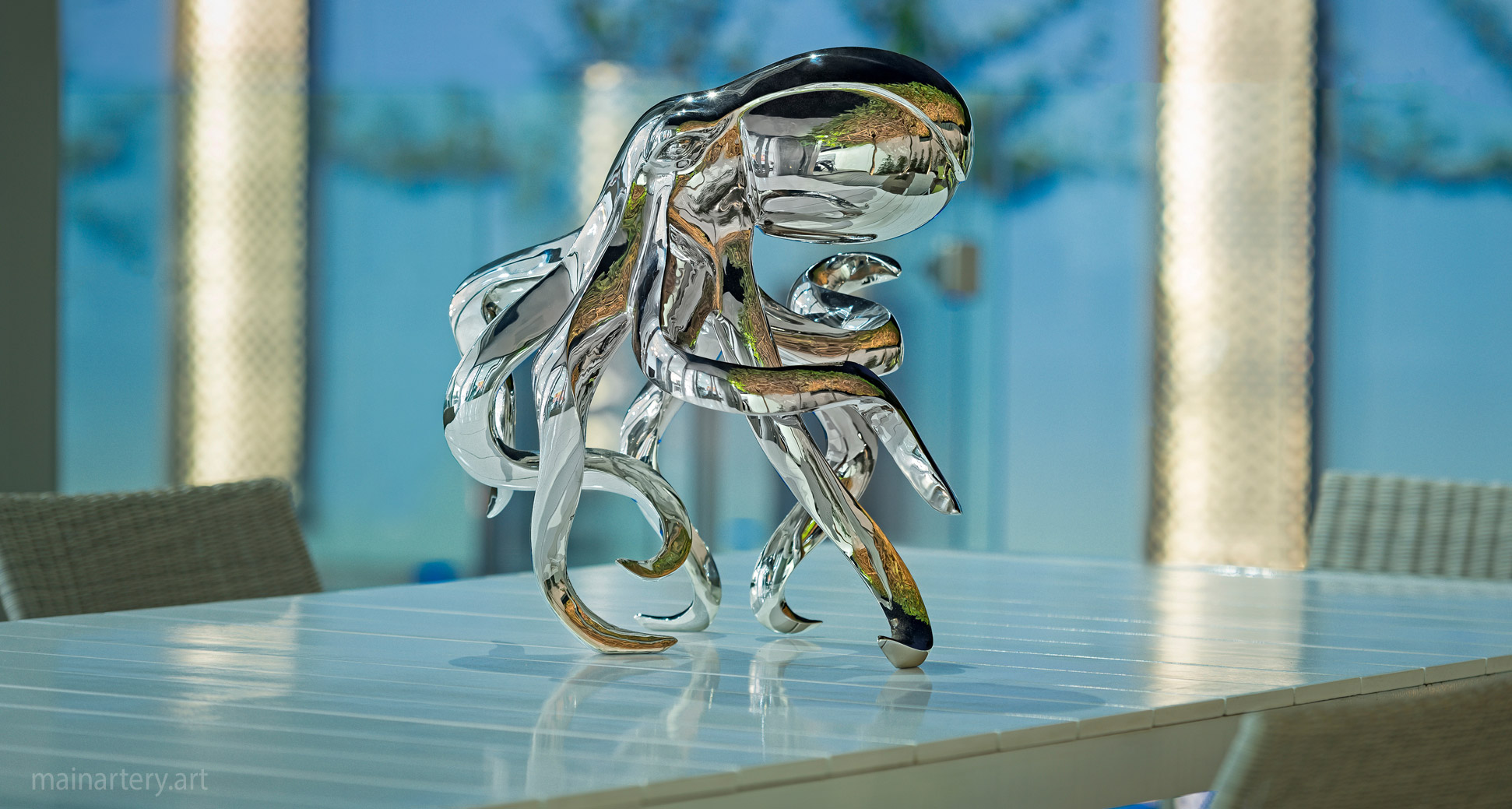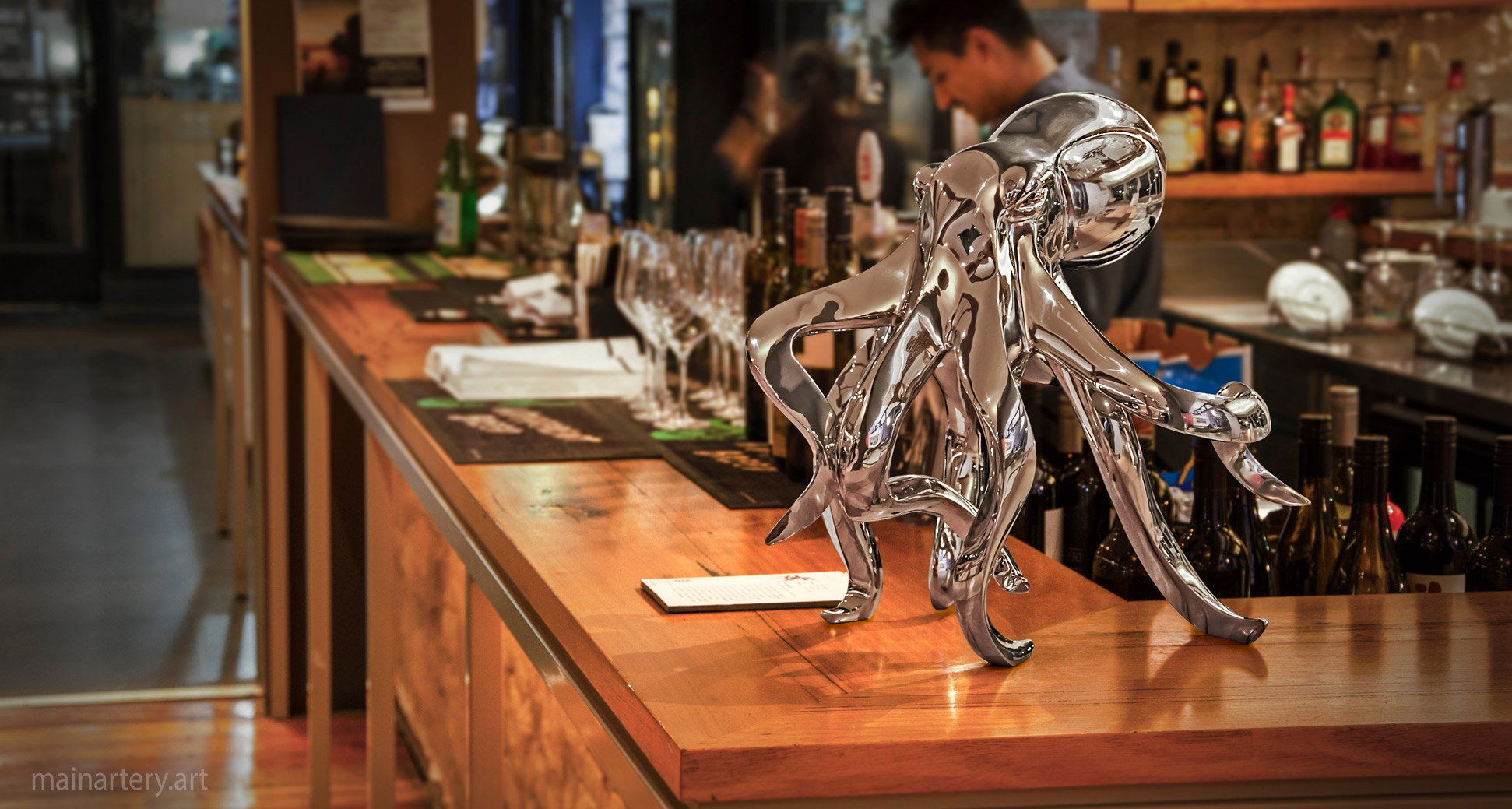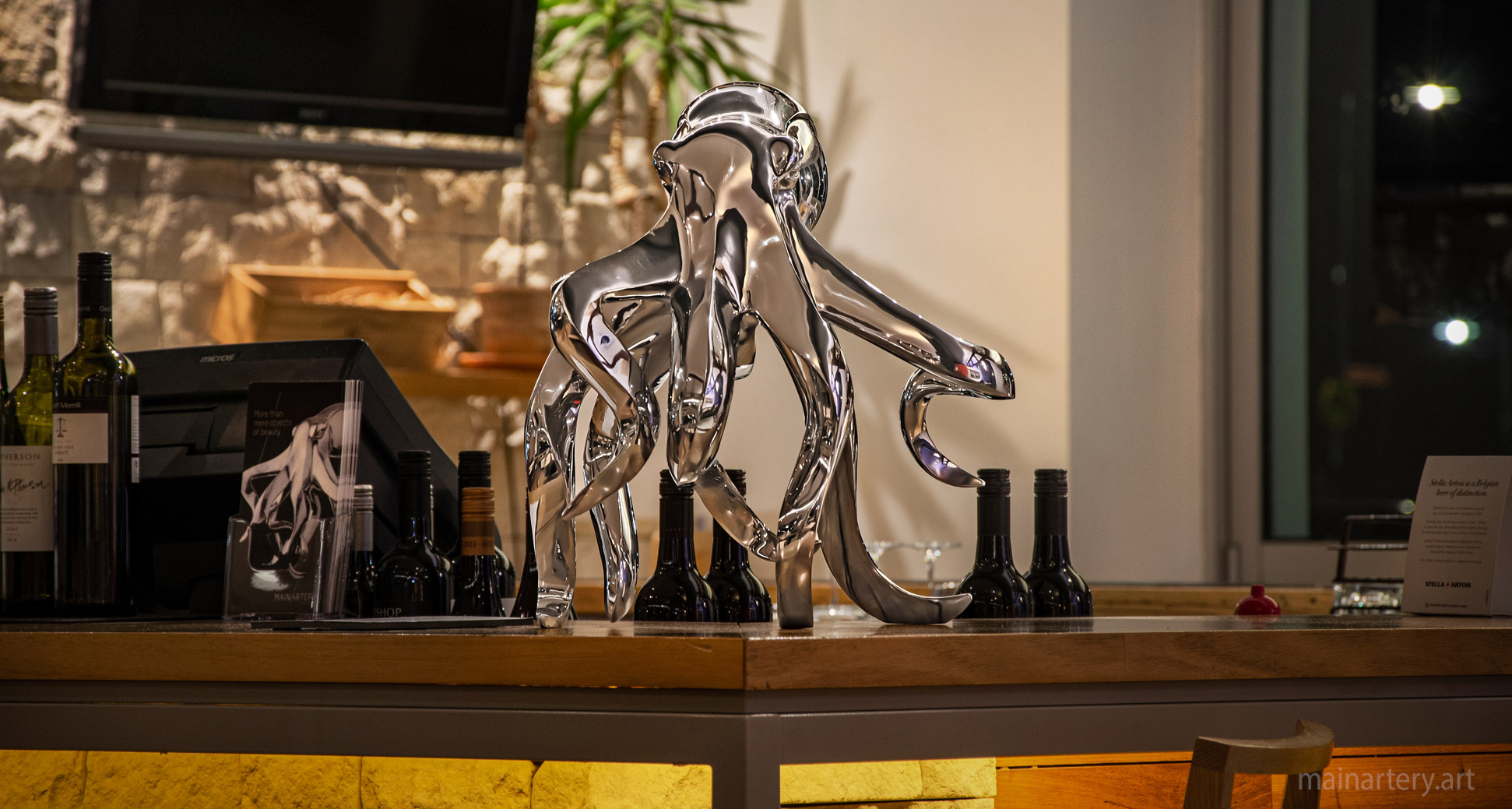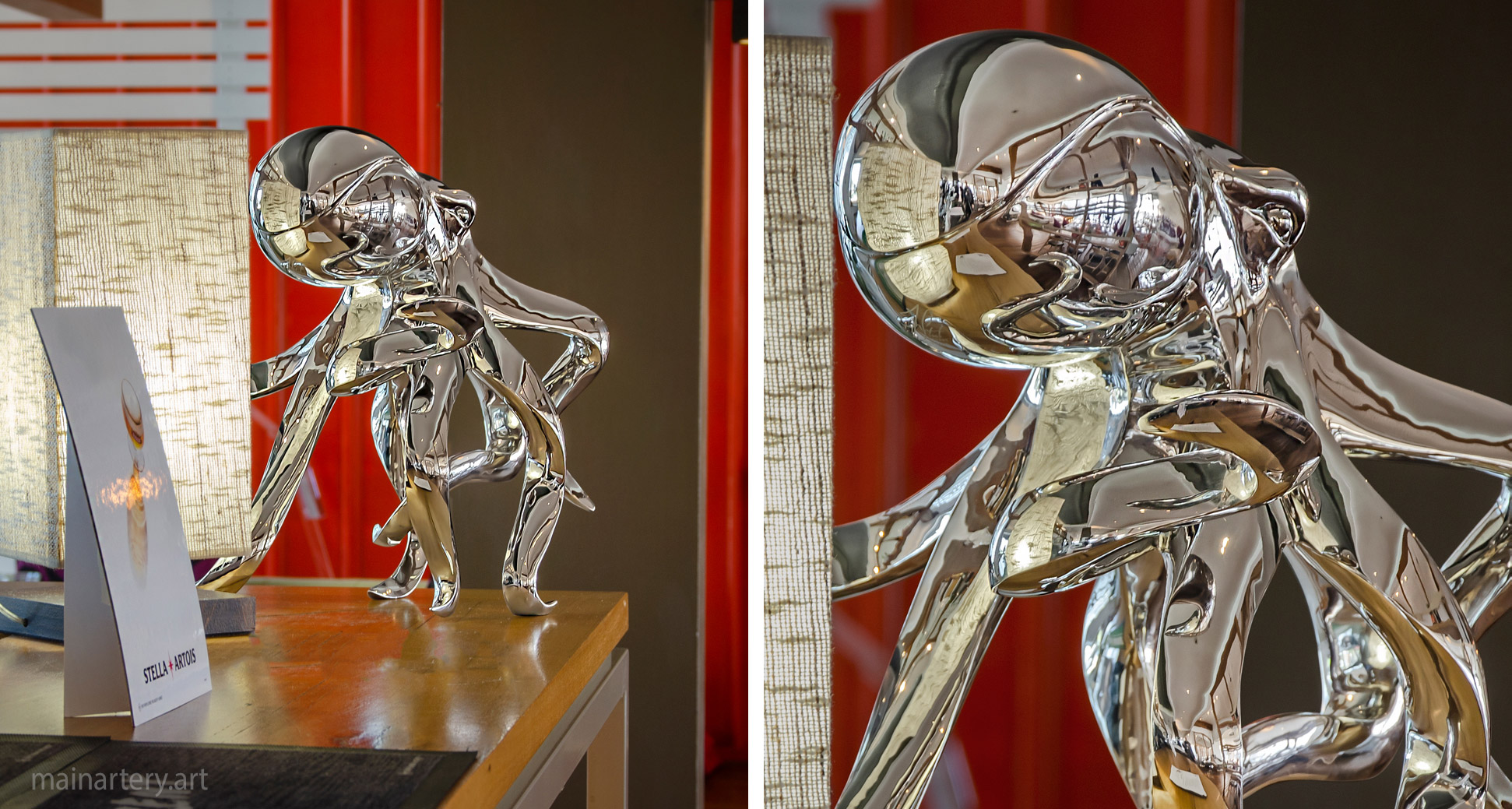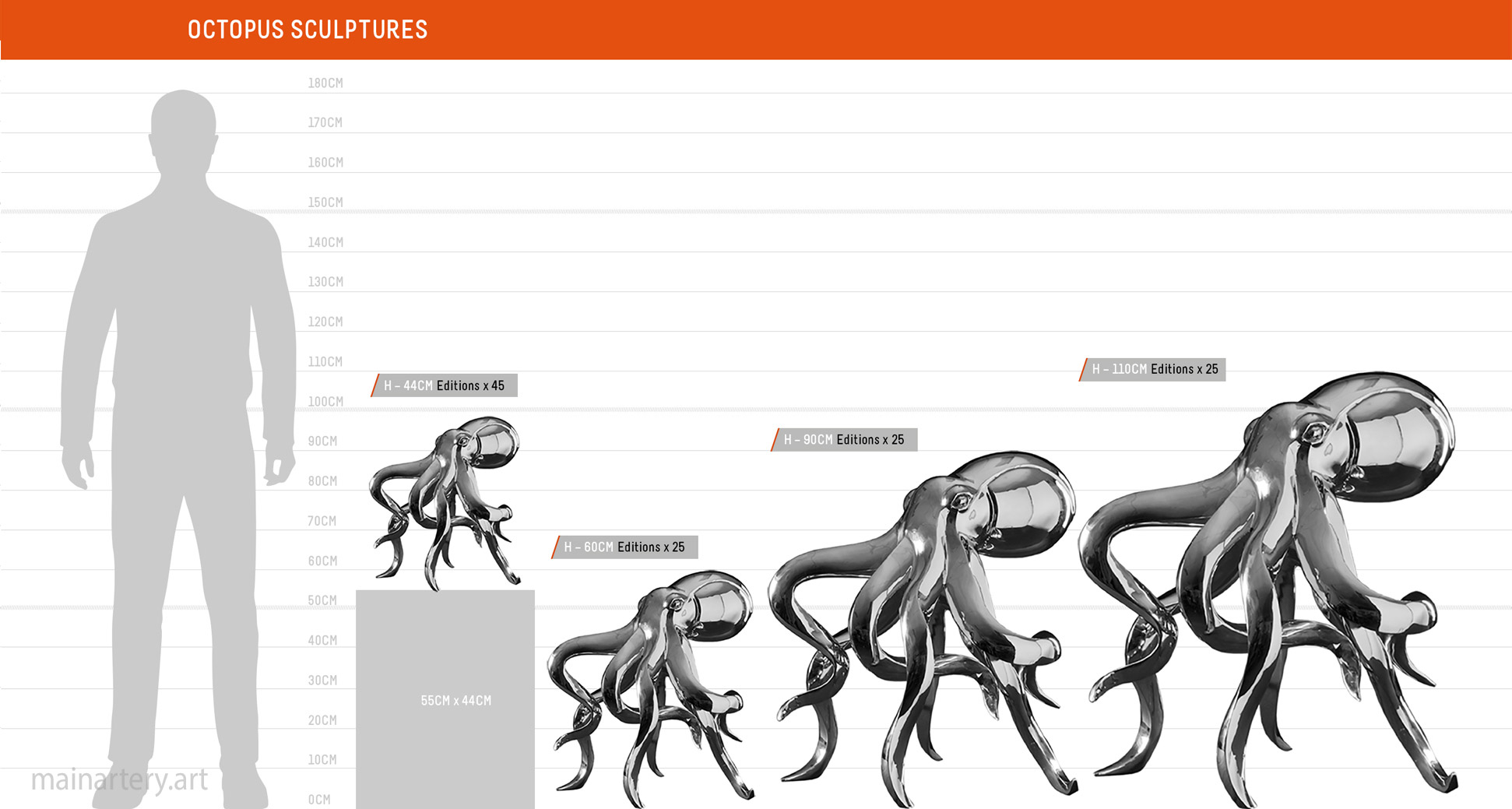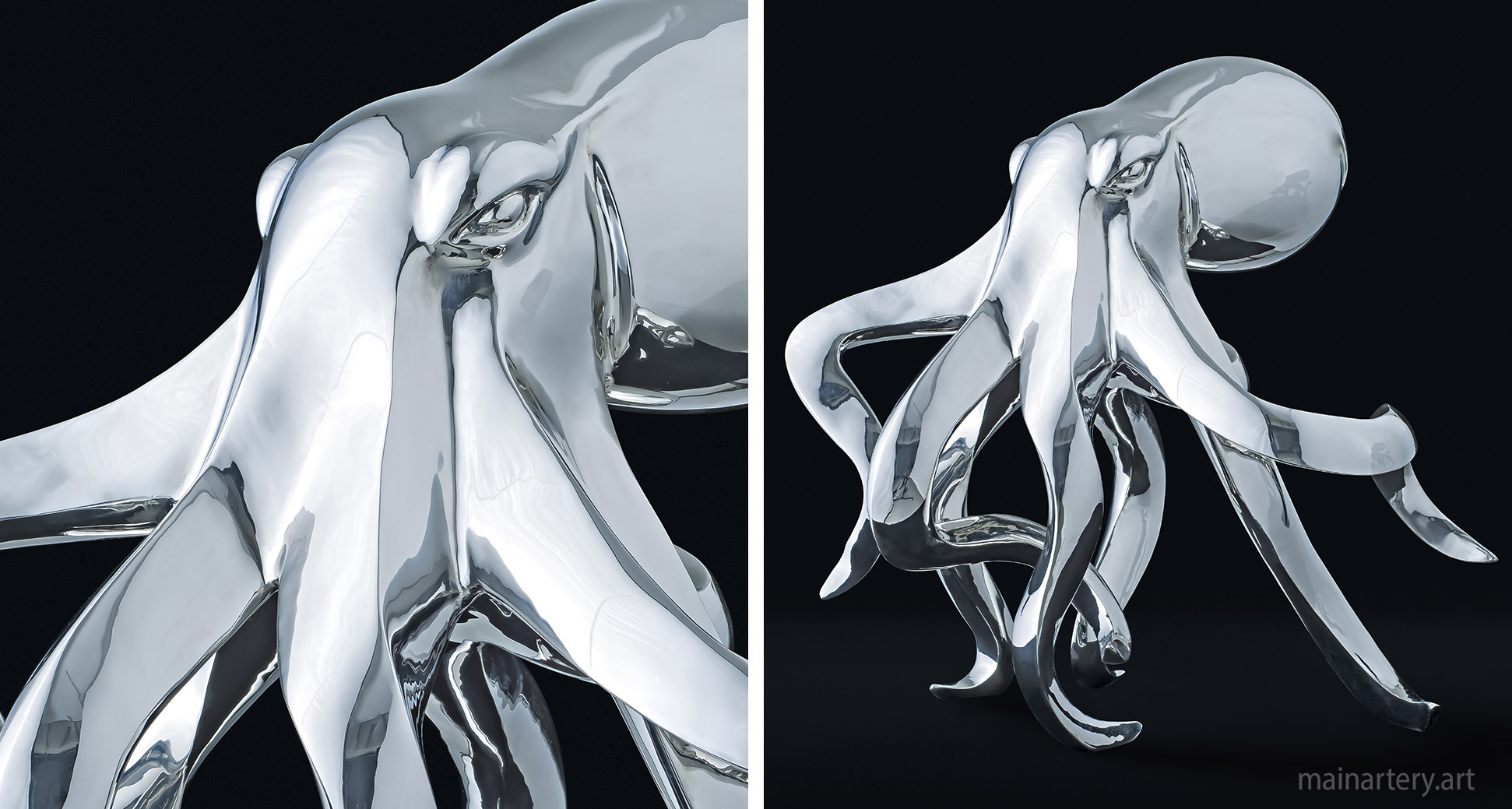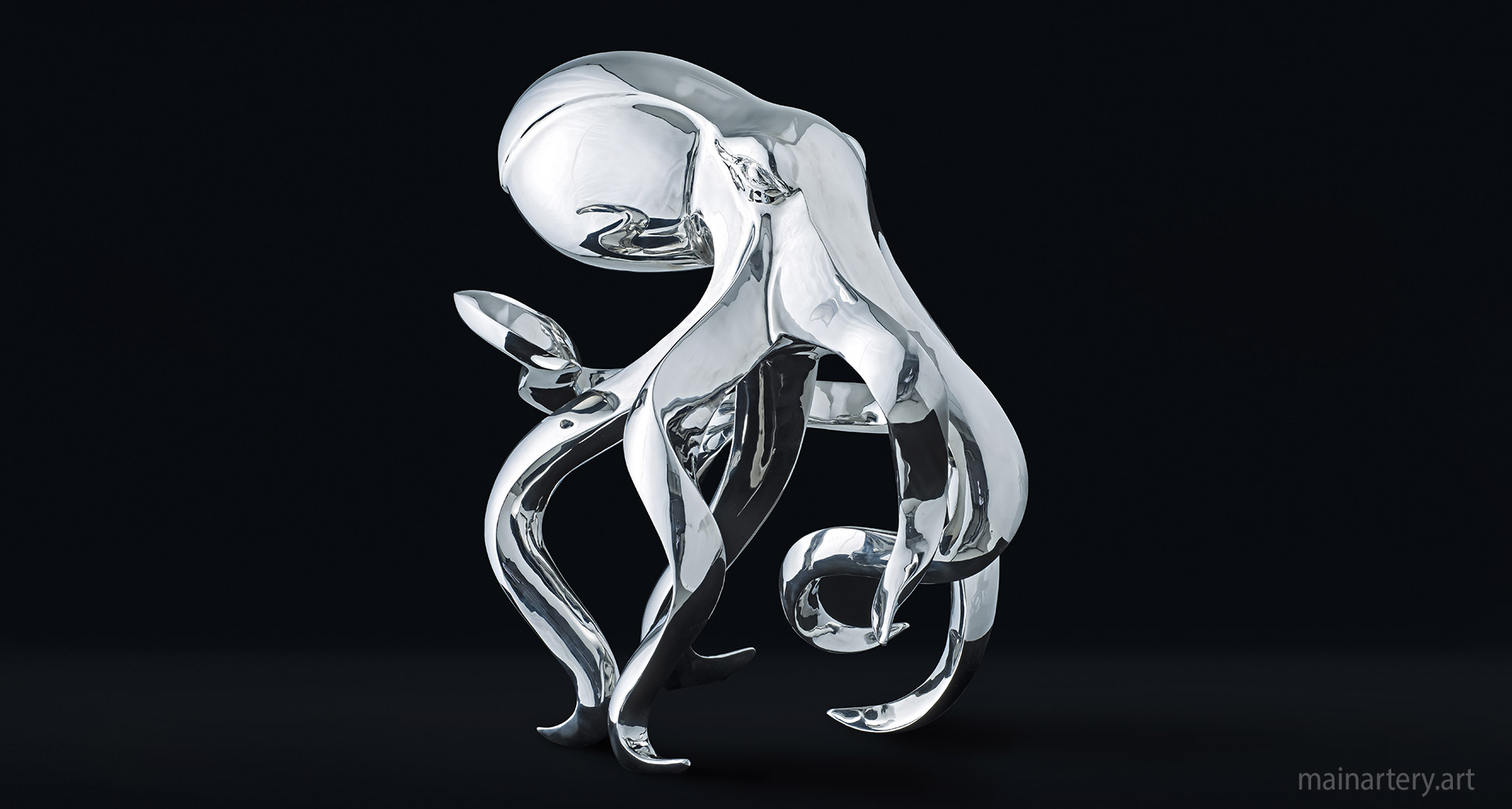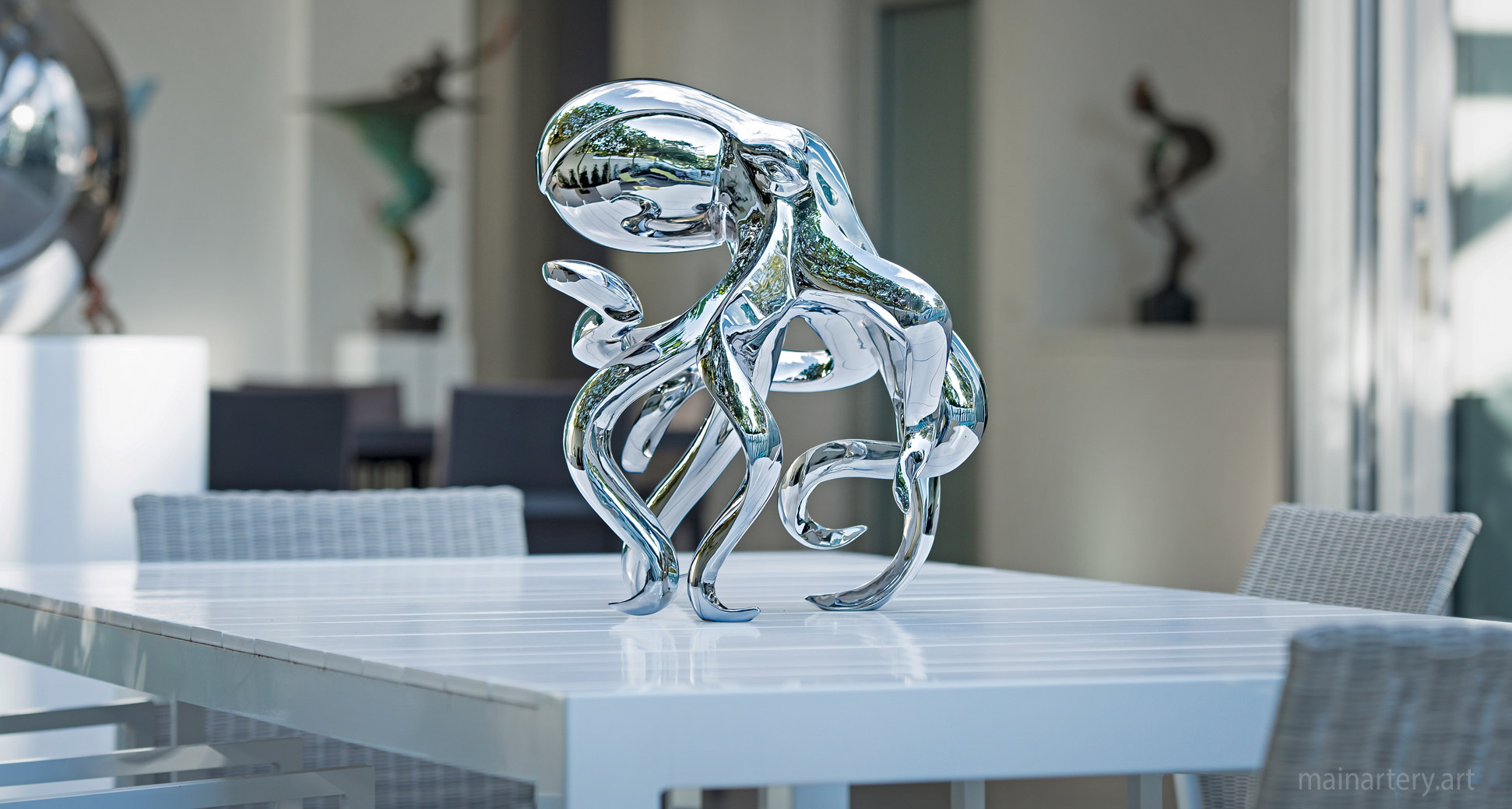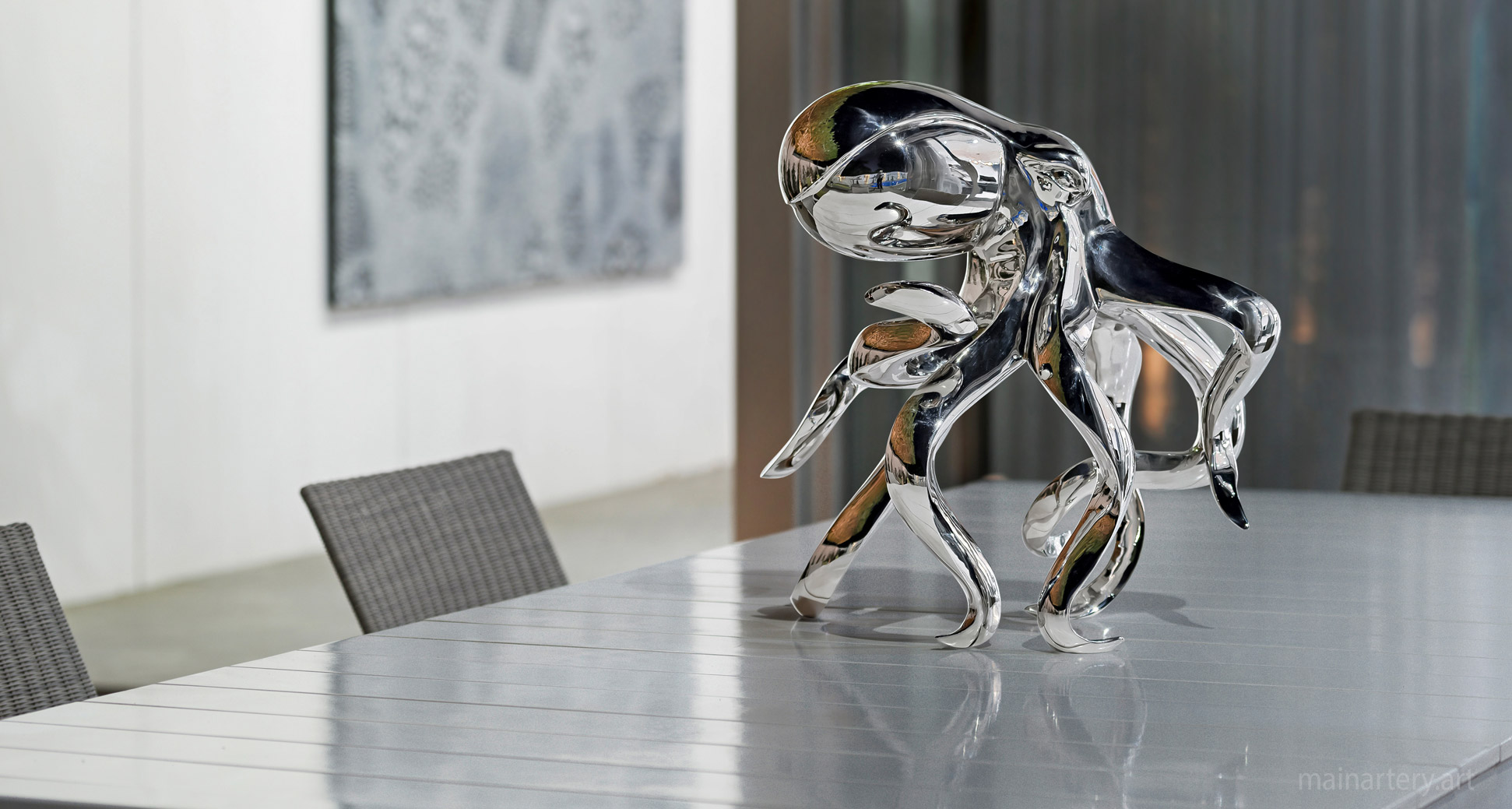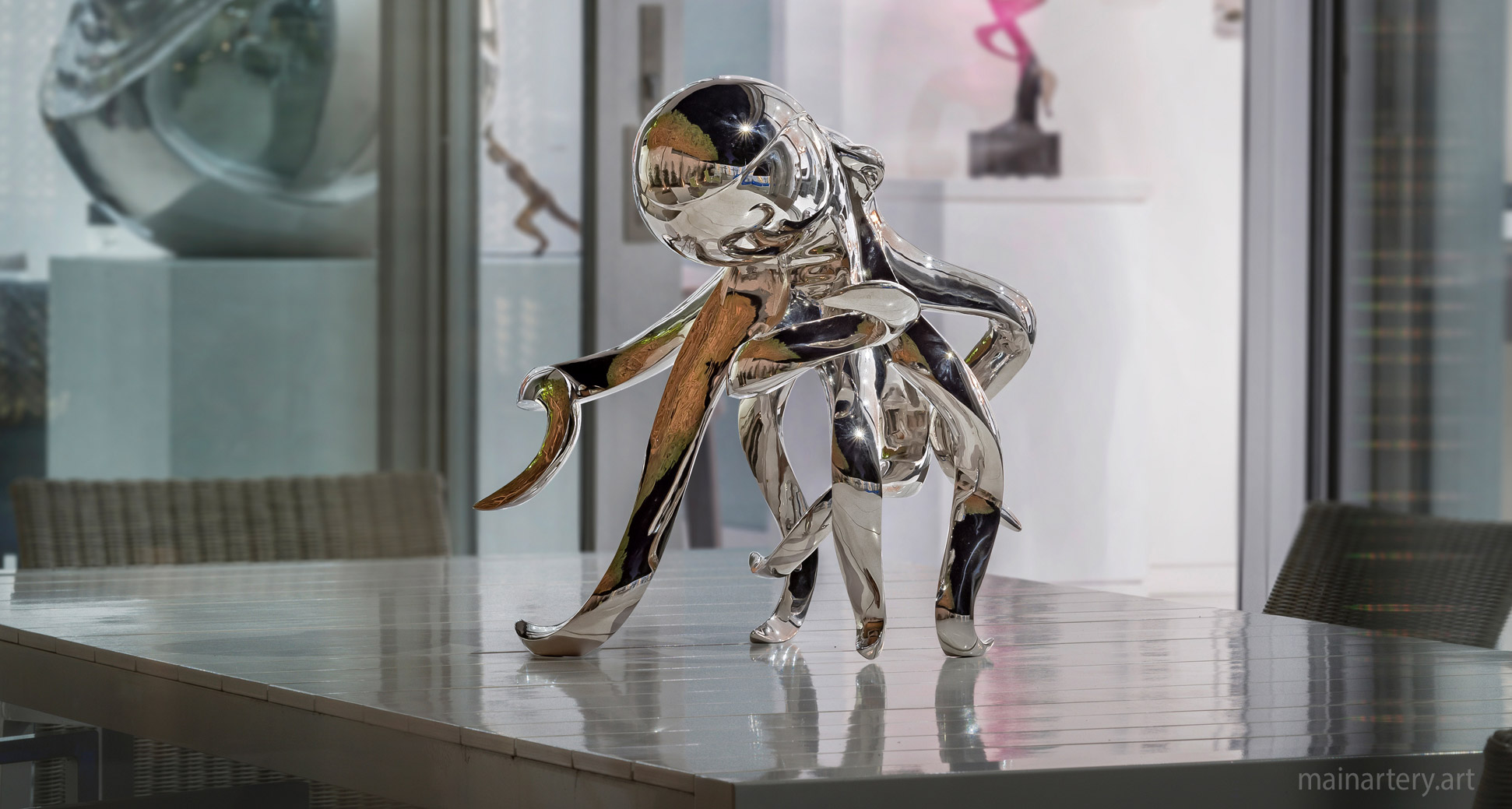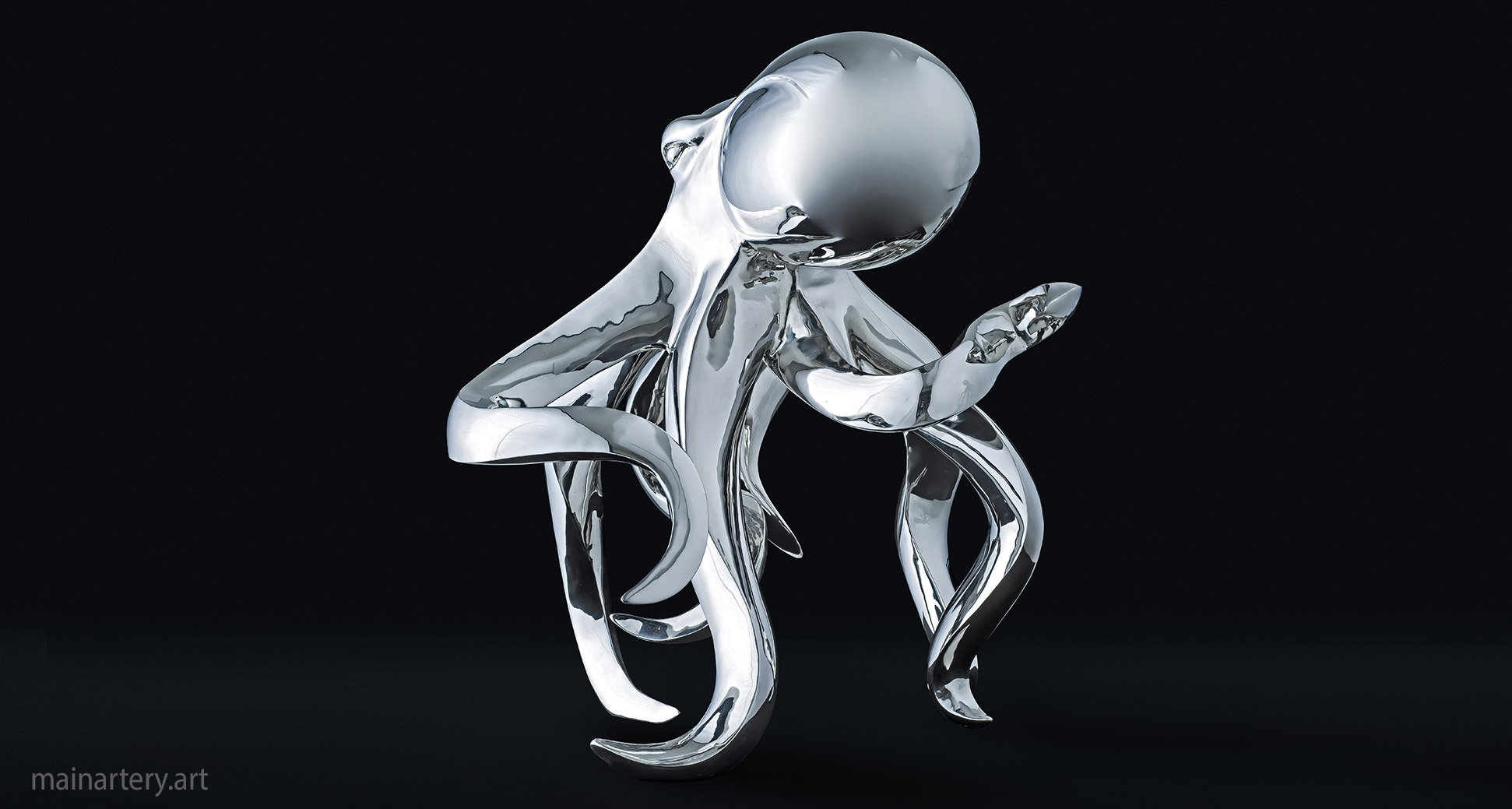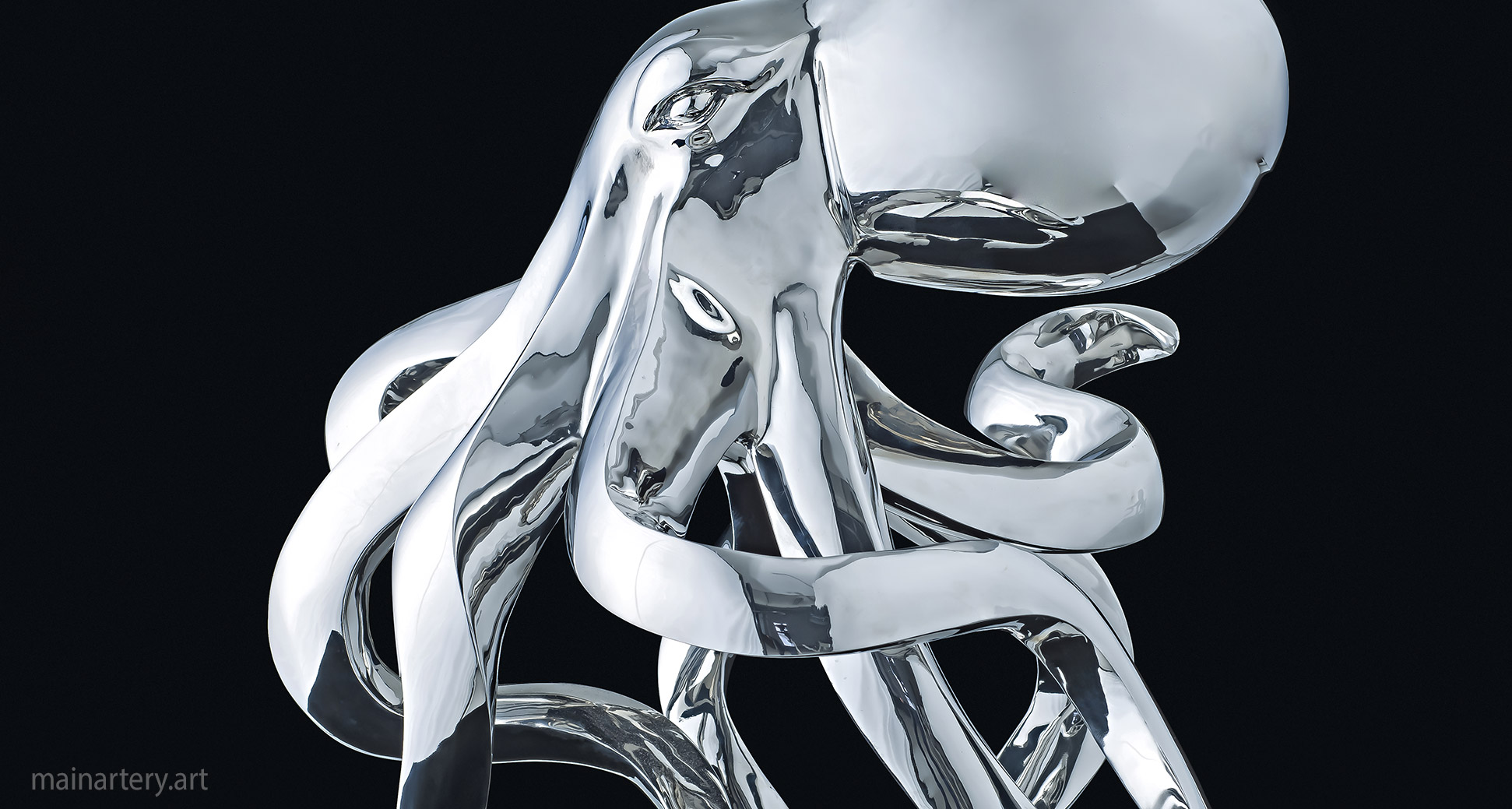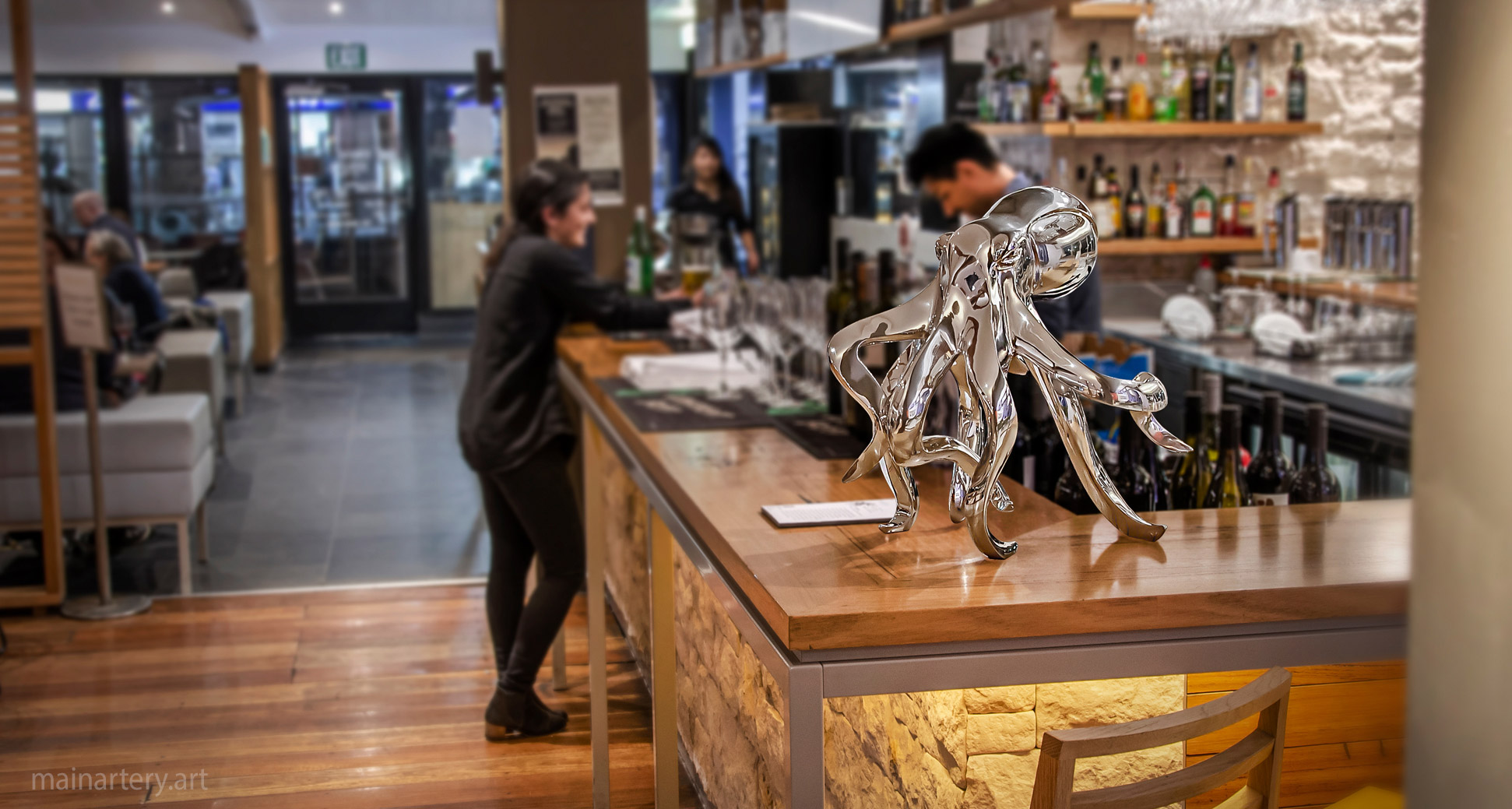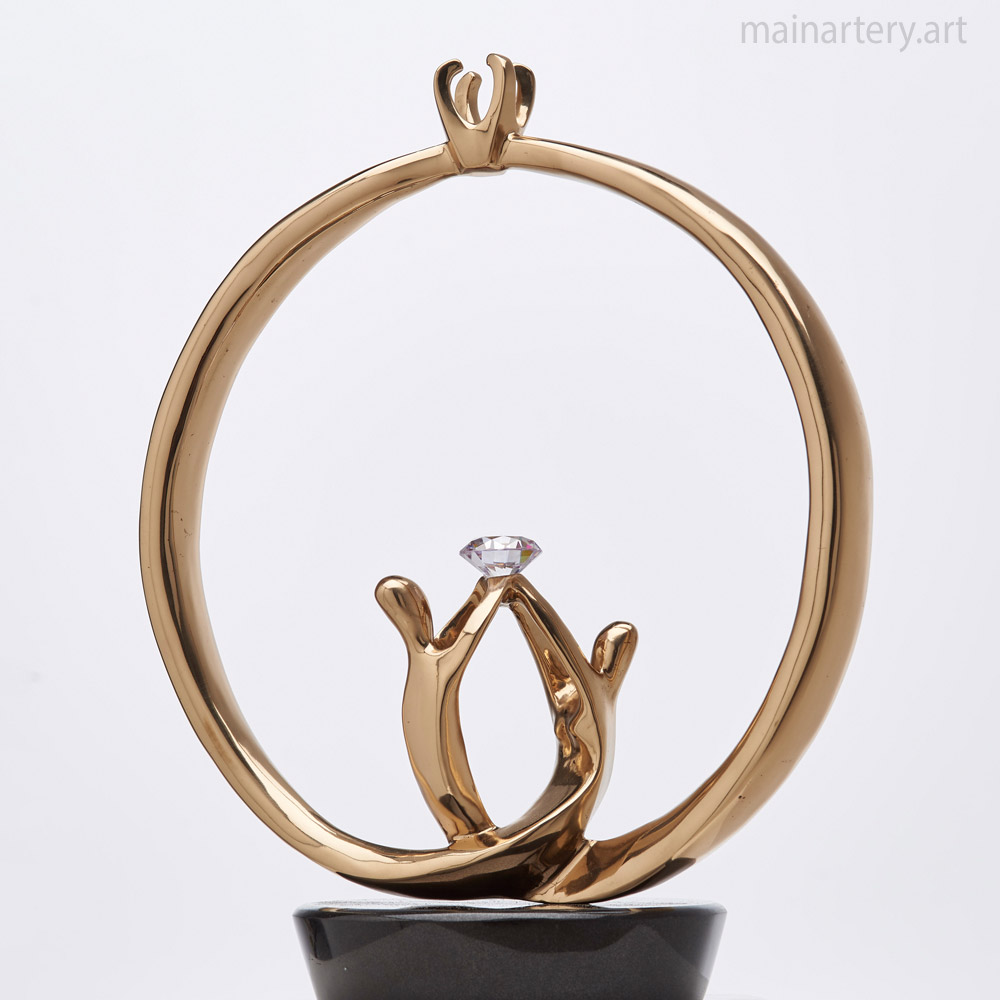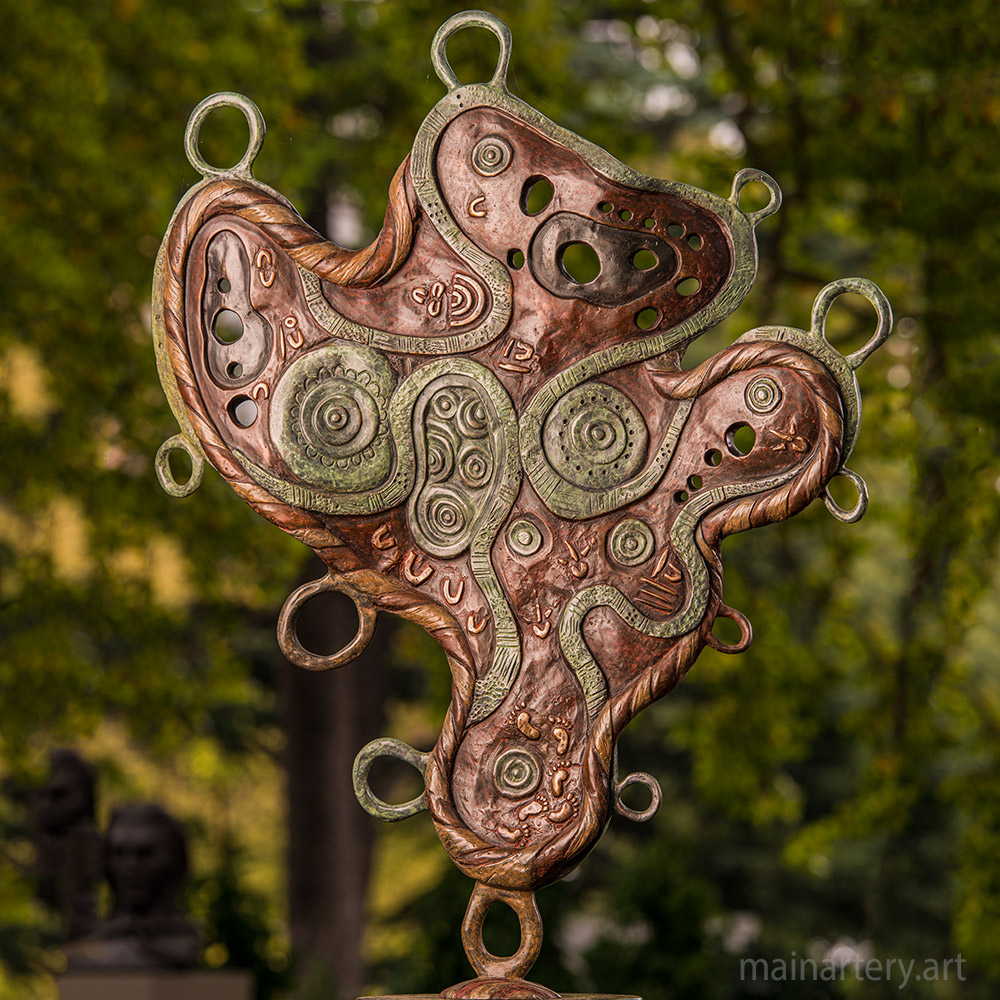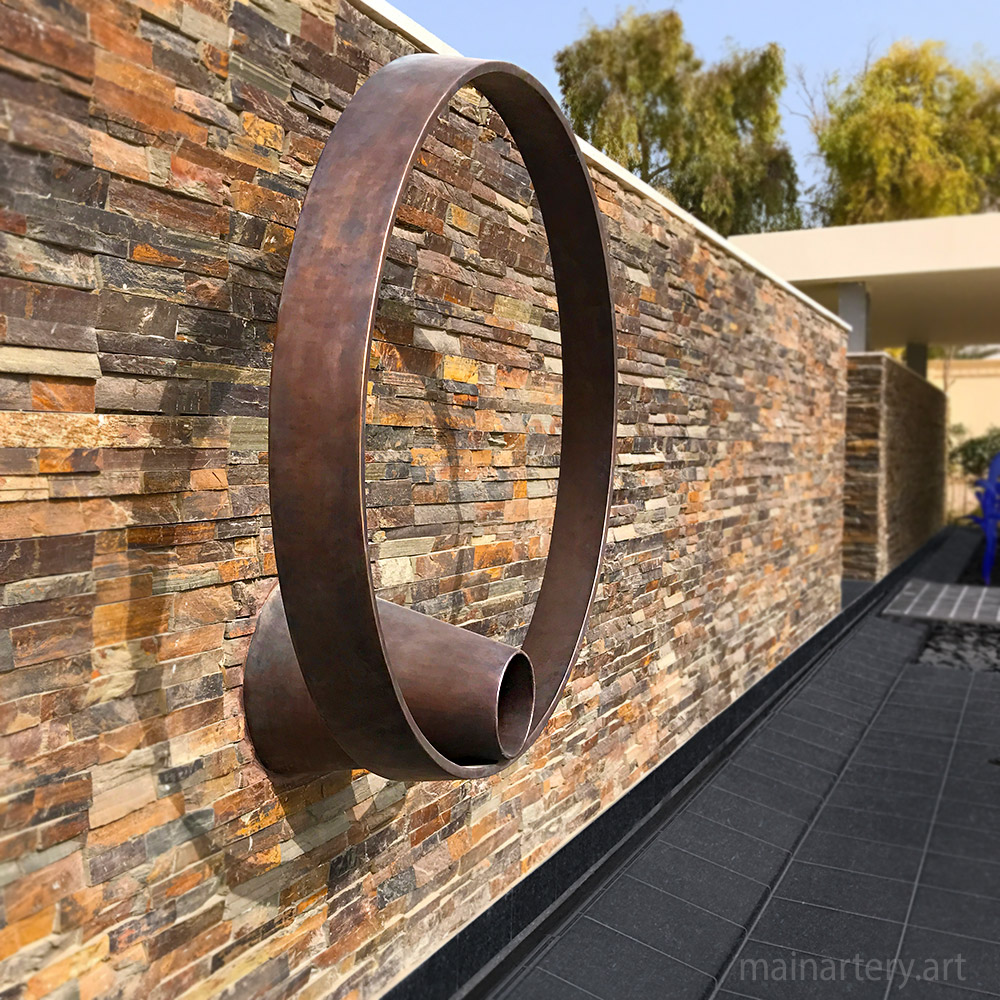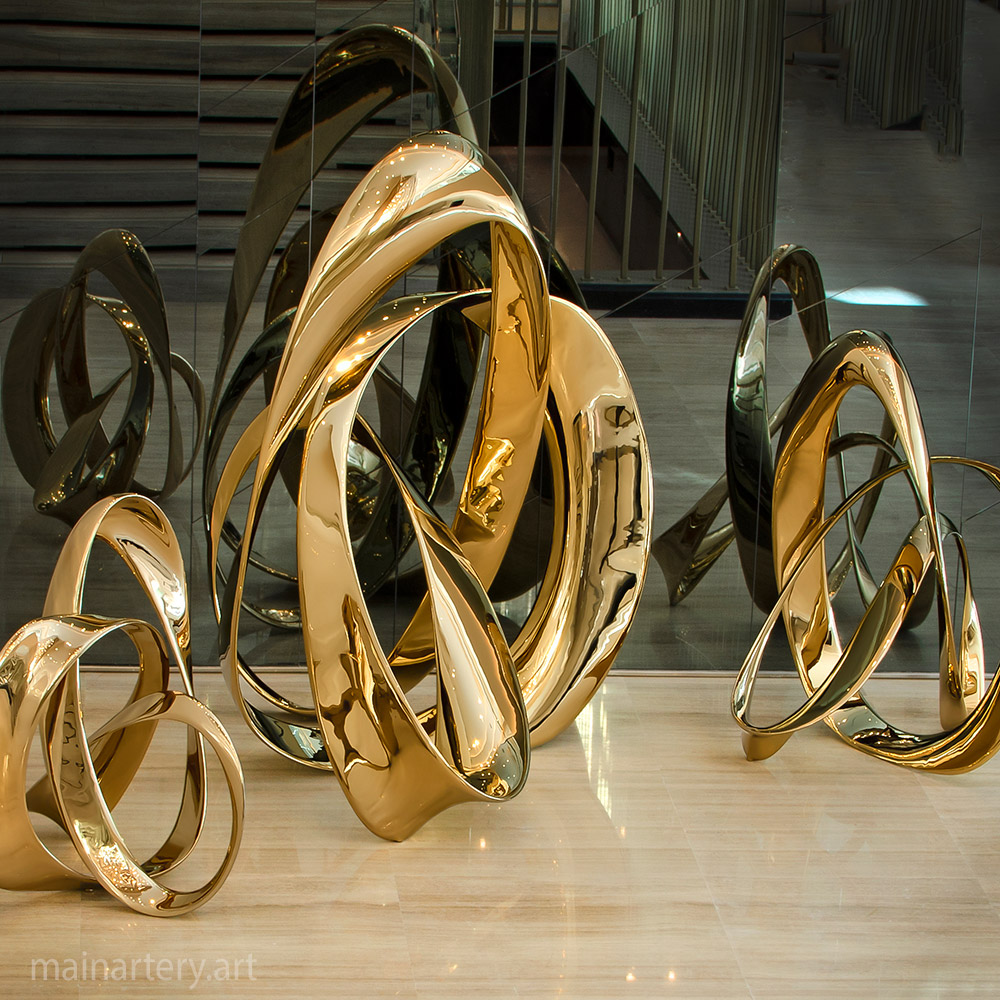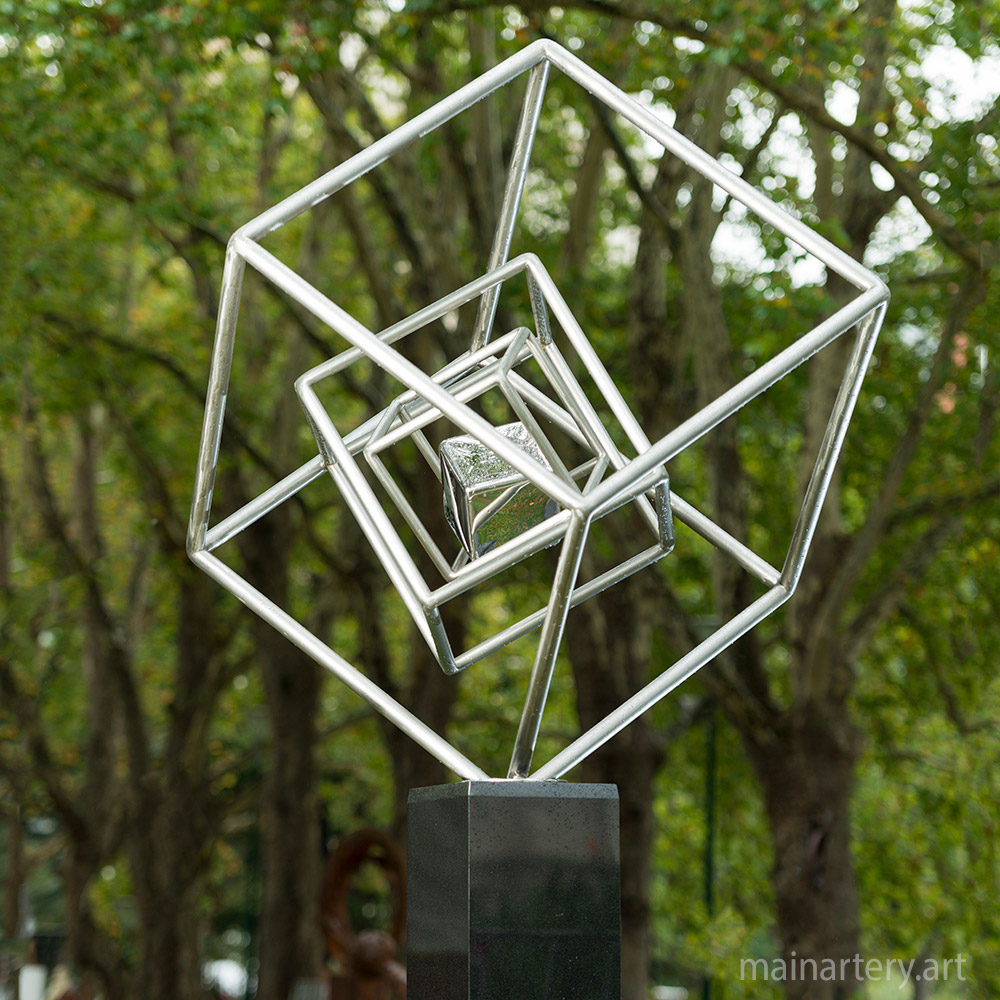Description
In his prose poem Maldoror, French author Isidore Ducasse alights upon the octopus as the ultimate animal to embody in his struggle against the creator. With its eight tentacles, its viscous embrace, and its fluid contractions, the octopus is a versatile and adaptable animal. Sleek, subversive, sinister and seductive, the octopus is also a challenging sculptural subject that Stuart has forged in flowing lines. Encased in highly polished stainless steel, reflecting the creature’s ability to mimic its surroundings, ‘Octopus’ elicits curiosity, respect and admiration.
Baby Octopus—Enigmatic Allure in a Seductive Undersea Dance
The “Baby Octopus” sculpture channels the fluid power and subtle menace of the octopus, capturing the essence of the creature’s eight sinuous tentacles. Inspired by Isidore Ducasse’s “Maldoror,” the piece merges sleek elegance with an undercurrent of danger. Cast in polished metal, this octopus stainless steel sculpture highlights the ceaseless adaptability and intelligence that have long fascinated both scientists and artists alike.
Sleek, Subversive, Sinister—Reflections of Ducasse’s Influence
In Ducasse’s poem, the octopus features as an emblem of rebellion, embracing its role as the ultimate adversary to the forces that be. Reflecting that spirit, “Baby Octopus” brims with a quiet defiance. Its glimmering steel surfaces mirror an ever-changing environment, much like a real octopus blends seamlessly into the seabed. Each tentacle flows with a liquid grace, forming a visual narrative of subversive fluidity. This small stainless steel octopus sculpture might appear fragile at first, but the underlying notion is that what’s small can hold incredible power, both physically and symbolically.
A Viscous Embrace—Capturing Movement and Adaptation
Though cast in metal, the tentacles seem perpetually in motion, as if searching for new footholds or curiosities. The transitions from smooth arcs to razor-thin edges suggest a layered complexity—hints of softness commingling with lethal precision. Observers may recall the octopus’s uncanny capacity to slip through minuscule gaps, an evolutionary marvel of shapeshifting biology. By condensing that dynamic into a single form, the sculpture underscores how the creature’s morphological freedom stands at odds with its environment, yet remains mesmerizing.
Shrouded in mystique, “Baby Octopus” also highlights the emotional interplay between fascination and unease. Many find the octopus both captivating and unsettling, simultaneously graceful and alien. By capturing that tension in a tangible piece, the artist transforms intangible qualities—subversion, sensuality, threat—into an object of contemplation. The piece urges us to question our own relationship to the unknown: what do we admire, and what do we fear, when faced with that which resists easy classification?
Ultimately, this octopus baby stainless steel sculpture sparks a dialogue about nature’s complexity and human inclinations to contain or interpret the wild. Reflections on the polished surface challenge the viewer’s assumptions about where boundaries lie—between man and beast, fluid and solid, admiration and dread. By forging the octopus in stainless steel, the artist immortalizes a creature whose real-life existence is both fleeting and inscrutable, giving form to the elusive interplay of curiosity and caution that defines our engagement with the deep sea. Observers leave with a renewed sense of wonder for a world teeming with marvels that remain just out of reach, as sleek and subversive as the “Baby Octopus” itself.

